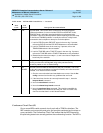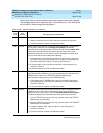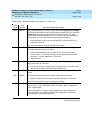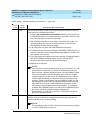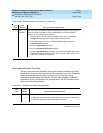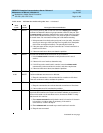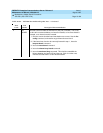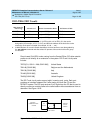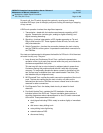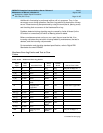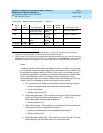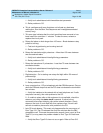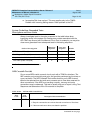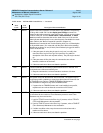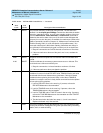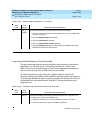
DEFINITY Enterprise Communications Server Release 6
Maintenance for R6vs/si
555-230-127
Issue 1
August 1997
Maintenance Object Repair Procedures
Page 10-406DID-TRK (DID Trunk)
10
For each call, the CO switch signals the system by opening and closing
individual DID loops (one of the eight ports) and causing the starting or stopping
of loop current.
A DID trunk operation involves three significant aspects:
1. Transmission—deals with the interface requirements regarding all AC
signals. Transmission includes gain, analog to digital encoding, and
digital to analog decoding.
2. Signaling—involves interpretation of DC signals appearing on Tip and
Ring to and from the CO. These signals include off-hook, on-hook, and
dial pulse detection.
3. Switch Connection—involves the connection between the trunk circuitry
and the TDM Bus of the system. It operates the switchhook connection to
the TDM Bus.
Four tests are implemented to diagnose the health of a DID trunk. All of them test
on-board circuitry only. They are:
1. Loop Around and Conference Circuit Test—verifies the transmission
operation of the circuit pack (loop around within the port), and checks the
conference capabilities of all ports.
This test may fail due to noise induced by adjacent electric power lines.
Customers having this problem should resolve it with their local power
company. To temporarily alleviate the alarm caused by the failure of this
test, the test may be disabled from trunk administration Test field. (This
also disables the port diagnostic test).
2. NPE Crosstalk Test—verifies the switch connection operation of the circuit
pack. The test also verifies that the trunk circuitry only talks on the
selected time slot on the TDM Bus and never crosses over to time slots
reserved for other connections.
3. Port Diagnostic Test—the battery feed circuitry is tested for hook
detection.
4. Port Audit Update Test—updates the DID translation information on
individual ports of the DID trunk. The port translation data consists of
signaling parameters whose values depend on the CO switch connected
to the trunk. These parameters include:
■ wink (signal indicating PBX is ready to receive digits) or immediate
start
■ dial tone or rotary dialing trunk
■ rotary dialing inter-digit timing
■ network balance R/RC
■ disconnect timing



